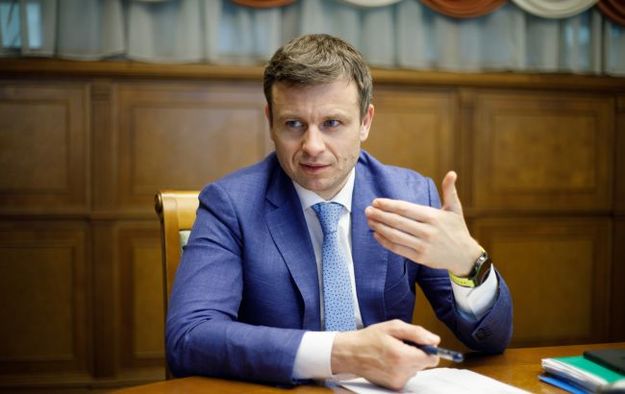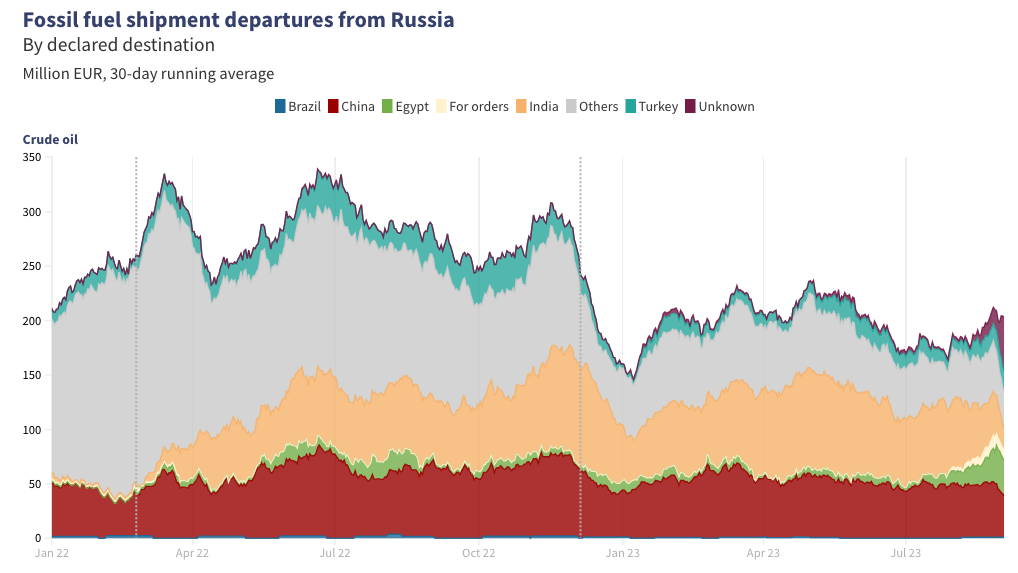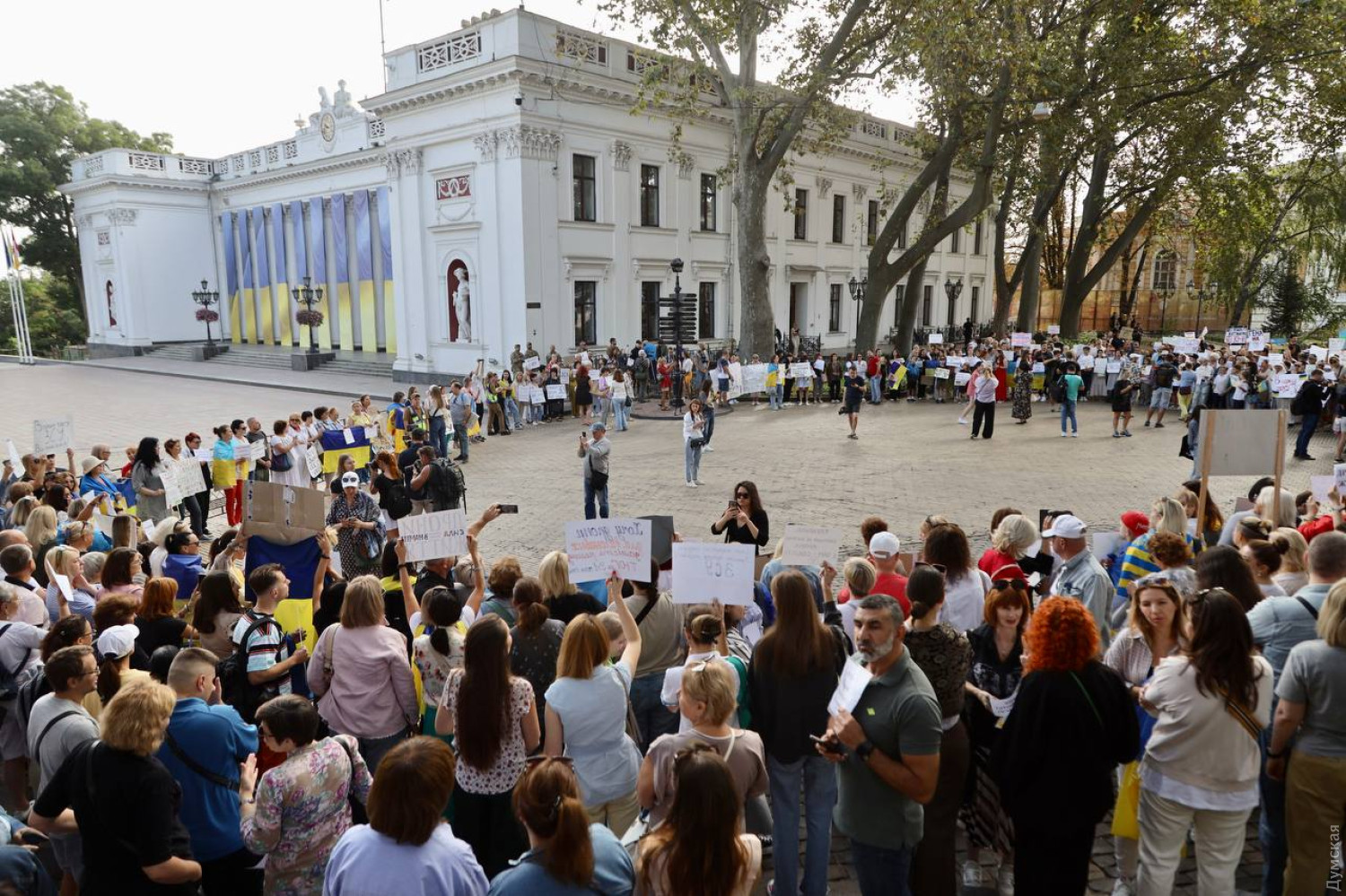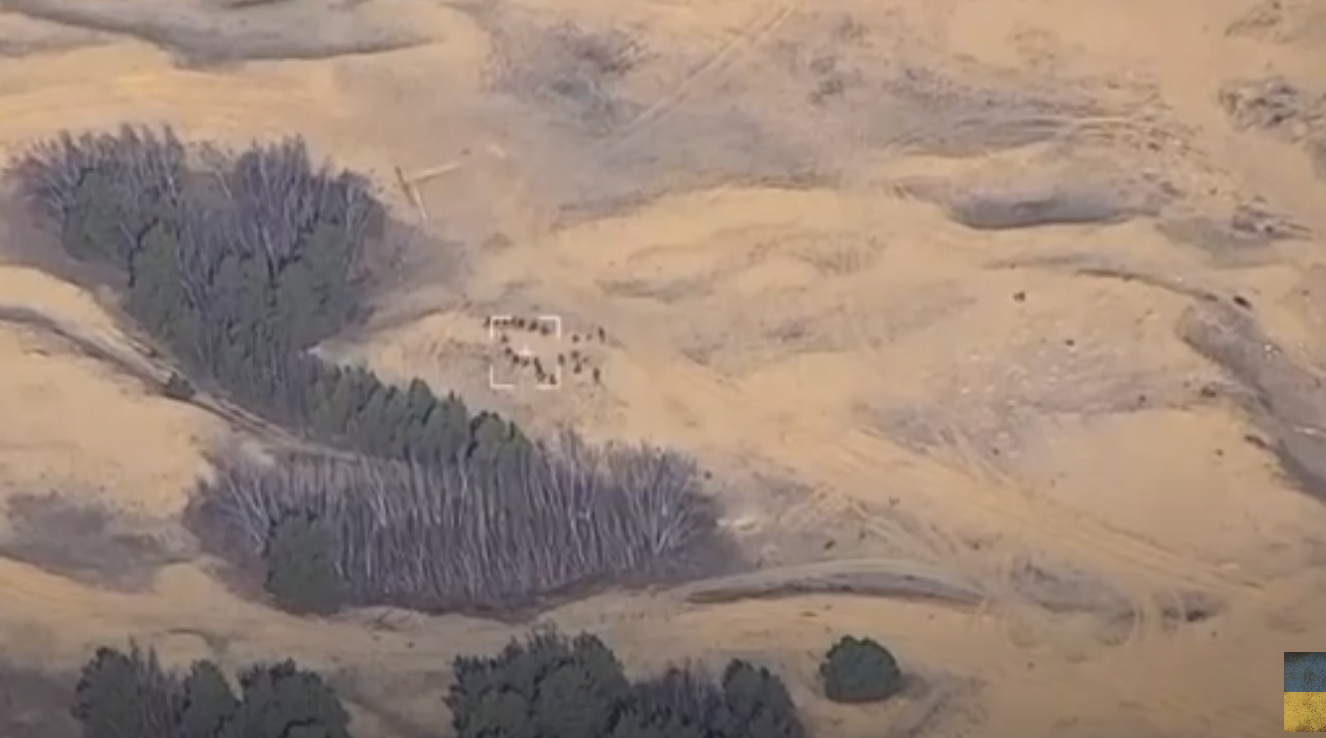Ukraine squeezes every last drop for defense in 2024 budget, Russia still 2.5x more
Ukraine is funneling 81% of all tax income to defense in 2024, still counting on $29 bn in aid from partners as Russia boosts military spending The post Ukraine squeezes every last drop for defense in 2024 budget, Russia still 2.5x more appeared first on Euromaidan Press.

Ukraine’s parliament adopted its 2024 budget on 9 November. Like last year, 50% of state expenditures and 95% of all of Ukraine’s state budget revenues will be spent on defense.
Under public pressure, frugality has increased: a part of local taxes will now be also allocated to the national budget instead of being spent on e.g. road repairs, and social spending was cut. In total, nearly 81% of all tax income (both local and national) will go for defense.
At the same time, Ukraine is reliant on loans and grants from its western partners to cover the other half of state expenditures — all of those unrelated to defense, including healthcare, education, and support for vulnerable populations. With its economy taking a massive toll from Russian occupation and blockade of its southern ports, Ukraine finds itself in a precarious situation as frictions emerge in the EU and US over providing this support.
Meanwhile, Russia is posed to vastly outspend Ukraine militarily in 2024, drawing on stable revenues from sales of oil and gas, which continue thanks to the inconsistency of Western sanctions. A 68% increase is planned for Russia’s defense expenditures in 2024, exceeding Ukraine’s 2.5 times.
Defense spending: 50% of budget expenditures
In total, Ukraine will spend UAH 1.69 trillion ($47 bn) for defense in 2024, with an additional UAH 43 bn ($1.2 bn) for developing domestic UAV production and an identical sum for developing domestic ammunition and weapons.
This makes Ukraine’s defense spending equal to 22.1% of its GDP, which constitutes nearly all of Ukraine’s budget revenues (excluding borrowings and grants). Defense spending comprises more than half of all budget expenditures.
General figures of Ukraine’s 2024 budget
- In general, state budget revenues were set at UAH 1.77 trillion ($49 bn), of which national taxes, rental incomes, and profits of state companies provide the most – UAH 1.67 billion ($46.4 bn).
- State budget expenditures were set at UAH 3.35 trillion ($93 bn).
- The 2024 budget deficit is expected at 20.4% of GDP, down from 27% in 2023. Still, this is almost half of the budget or UAH 1.58 trillion ($44 bn).
The budget revenues cover all costs for national defense. The rest of the expenditures fall within the budget deficit, expected to be covered at the expense of domestic bonds, international bonds, and financial assistance from IMF, EU, US, and ally countries. Domestic bonds will cover the sum necessary for servicing the national debt, while financial assistance will be spent on education, healthcare, social assistance, pensions, and costs for state institutions.
According to the macro forecast, which is the basis for budget calculations, Ukraine’s government expects real GDP growth in 2023 at 4.6%, an inflation rate of 9.7%, and an average annual exchange rate of the dollar of 40.7 UAH.
Russian military spending is 2.5 times higher than Ukraine’s

The financial situation remains complicated for Ukraine, given that Russia plans a 68% increase in military spending in 2024, to $112 bn, surpassing Ukraine’s defense budget 2.5 times.
While Ukraine is allocating almost all available costs, counting on substantial financial assistance, for Russia, such a massive increase in military spending is relatively easy with the remaining extra finances. Taking to its advantage the inconsistency of Western sanctions, Russia continues to ship its oil and gas, which provide stable revenues. EU tankers play a crucial role in enabling Russian exports.
Detailed expenditures
Along with UAH 1.69 trillion for defense, almost UAH 470 bn will be allocated to social protection. Expenditures on medicine and education will amount to UAH 201 bn and UAH 178 bn, respectively.
The main expenditures (by sum) include (UAH):
- 1.69 trillion ($47 bn) for defense, including 1.07 trillion ($29.6 bn) for salaries of the personnel and compensation, 311 billion ($8.6 bn) for weapons and equipment, 61.2 bn ($1.7 bn) for fuel and related technical materials, 30.4 billion ($0.84 bn) for food, and 70 bn ($1.94) for other defense expenditures
- 275 bn ($7.63 bn) for state pensions and similar payments
- 201.9 bn ($5.6 bn) for healthcare
- 189.3 bn ($5.2 bn) dotations for underdeveloped regions to provide basic services
- 178.8 bn ($5 bn) for education, including 102.8 billion ($2.9 bn) for salaries of workers and 4.2 bn ($120 mn) for bomb shelters and repairment of damaged schools
- 131.7 bn ($3.7 bn) for government, courts, National Anti Corruption Bureau, prosecutors offices, regional administrations and other state institutions
- 114.6 bn ($3.2 bn) for social protection of people with disabilities, social assistance to pensioners without the right to pensions, people internally displaced due to war, low-income families, and similar vulnerable categories
- 49.9 bn ($1.4 bn) for heating and utilities subsidies
- 27.6 bn ($760 mn) for social protection of children and large families
- 24.6 bn ($680 mn) for the Fund of entrepreneurship development and other support
- 13.5 bn ($375 mn) for veterans, including rehabilitation and housing
- 13.5 bn ($375 mn) for science
- 10.7 bn ($300 mn) for culture and media, including theaters and national broadcaster Suspilne
- 7.5 bn ($210 mn) for sports and youth
- 4 bn ($111 mn) for natural reserves, national parks and reducing emissions
- 2.5 bn ($69 mn) for the reform of digitalization
- 2 bn ($56 mn) for humanitarian demining
- Other: UAH 3.35 trillion ($93 bn)
Covering the deficit: $29 bn still to be found
Out of the $44 bn of an expected budget deficit that external borrowings or grants should cover, $29 bn still needs to be covered by specific plans or guaranteed agreements, Ukraine’s Minister of Finances Serhiy Marchenko said in parliament on 28 September.
“This year [2023], we had guaranteed about $42 bn in external financing of the budget deficit. I hope, and we are doing everything possible to ensure that it is guaranteed in 2024 as well,” Marchenko emphasized. “This is a dialogue, we show the benefits, we show what will happen if they don’t give us these funds, we show our successes and the crazy work that our armed forces are doing, holding back one of the largest armies in the world.“

The largest part of the remaining $29 bn of uncovered budget deficit is expected to be covered by the EU and US grants.
Ukraine’s government plans to cover almost half of the budget deficit in 2024 thanks to EU support under the new Ukraine Facility program. The EUR 50 bn program is designed for four years.
To receive the funds, the EU must approve a set of reforms submitted by Ukraine, which the country undertakes to implement in four years. Of the EUR 50 billion, 17 billion are grant funds, and 33 billion are soft loans, the payments of which will begin only after ten years. In the first year, the Ukrainian authorities expect to receive EUR 18 billion.
However, the EU plan to allocate these funds faces the risk of blockade and blackmail from Hungary. The 27 EU member states will vote on the aid package at a summit on 14-15 December, and Hungary remains the primary opponent of the package. Still, the EU will be able to work around any Hungarian veto and give Ukraine the EUR 50 bn 4-year-package through bilateral agreements with each of the EU countries. EU officials hope the agreement will still be reached without the need for such radical measures, Reuters writes.
Regarding US financial aid, a crucial $11.8 bn of financial assistance is at stake. The Biden Administration asked the US Congress to allocate additional funding for assistance to Ukraine in the next fiscal year with a gradual decrease in the monthly amount of aid from $1.1 billion to $825 million.
However, even this minimal assistance is currently being disputed in Congress as part of the vast $105 billion package of joint aid for Ukraine, Israel, and the security of the USA’s own borders.
Republicans first demanded to consider different types of aid separately and increase finances for the American border. However, the proposal was dead on arrival in the Senate. Currently, senate Republicans and Democrats are working on a new bipartisan aid package that would include aid to Ukraine, Israel, Taiwan, and increased security on the US southern border with likely more funding for the latter.
For Ukraine, the absence of either EU or US financial aid in 2024 would pose a serious financial problem. Without this aid, Ukraine will be forced to cut social spending dramatically, leaving vulnerable categories of people without any means of survival, which can provoke social unrest. On the other hand, cutting funding for the military would be an even larger disaster since military spending is covered at its bare minimum. Volunteers provide numerous items such as cars or drones to the front for funds gathered by ordinary Ukrainians.
One possible solution to address frictions in the EU and US over covering Ukraine’s budget deficit would be to finally tap into the $300 bn of Russian assets, which remain frozen in the West over the legal uncertainty of such a confiscation. A policy paper by the International Center for Ukrainian Victory recently addresses the legal and economic concerns of such a step.
Local budgets increase frugality, allocate funds for military spending
Ukraine’s local budgets in 2023 amounted together to nearly UAH 550 bn ($15.3 bn), making roughly 25% of total tax incomes in the country. Relatively small compared to national budgets, they had full autonomy even during martial law, according to Ukraine’s constitution.
The recent decentralization reform in 2014-2019 increased local budgets, allocating 60% of personal income tax to municipalities. During the war, this resulted in an even further increase in local funding by UAH 90 bn ($2.5 bn) due to the relatively large UAH 110,000 ($3,000) salaries of soldiers on the frontline. Taxes from these salaries were mainly redirected to their home municipalities and not necessarily relocated for defense. Due to budget autonomy, municipalities had to decide what part of the local budget would go for crucial services (such as school, transport, healthcare, and road maintenance) and what part would support the brigades where soldiers from the municipality serve.
Most of the local budgets did support some units. However, this decentralized system still resulted in more money being accrued in municipalities than going to support the army. The situation sparked a wave of protests in Ukraine, and the government reacted.

First, numerous protests happened in Ukraine’s largest cities of Kyiv, Lviv, Odesa, others, and some village communities. People were demanding to “stop building roads” and “replacing the pavement,” saying in one of the famous mottos: “Do you really think the quality of roads bothers us when dead soldiers are carried on them?”
Although the scope of construction radically decreased after the beginning of the war, even those projects that remained executed by local authorities irritated many, given that part of the army supplies was still provided by volunteers and donations of ordinary Ukrainians.
After several protests, local governments reacted, increasing their spending on the military several times.
For example, Ukraine’s largest municipality, Kyiv, allocated 10% of its budget for the military in 2023. Out of UAH 65.6 bn ($1.8 bn), UAH 6.2 bn ($172 mn) went to support units based in Kyiv and fighting on the frontline.
Ukraine’s city of Dnipro allocated UAH 0.55 bn out of UAH 15.5 bn for the military, or 4%. Ukraine’s city of Lviv allocated UAH 1 bn for the frontline units and UAH 1.1 bn for the rehabilitation of soldiers out of the UAH 13.6 bn budget, or 7% for the frontline and 8% for rehabilitation.
For many, the sums still needed to be sufficiently high. Eventually, the government reacted and made the martial law tax reform, taking all soldiers’ income tax from municipalities to the state budget for defense starting from 1 October. Ukraine’s parliament supported the relevant bill in the final reading on 8 September.
As a result of the reform, the local budgets in 2024 are expected to decrease to UAH 473 bn ($13.1 bn) from nearly UAH 550 bn ($15.3 bn) in 2023. The additional nearly UAH 100 bn ($2.8 bn) which will be allocated to the state budget in 2024 will fund domestic drone production (45% of the sum) and the domestic production of weapons and ammunition directed by the Ministry of Strategic Enterprises (45% of the sum. The remaining 10% will go for direct support of army units to cover their immediate local needs.
“These funds will be used for the development of existing production facilities and the launch of new ones. Together with the Minister of Defense Rustem Umerov, we will work on the localization of the production of weapons and military equipment,” said Oleksandr Kamyshin, Ukraine’s Minister of Strategic Industries.
According to him, in 2023, Ukraine increased ammunition production several times compared to 2022, while domestic production of military drones reached dozens of thousands per month at the end of 2023. He declined to name specific numbers, saying that nearly 100 companies are manufacturing drones in Ukraine.

Verification of social assistance and cuts
Besides tax changes during martial law, the government also took other measures to cut unnecessary expenditures. One of the examples was the massive audit of social assistance, which resulted in the declining assistance for internally displaced persons to 140,000 people who were either wealthy enough to make expensive purchases, went abroad, or returned to their hometowns.
The audit will save UAH 400 mn ($11.1 mn) monthly. Ukraine’s Minister of Social Policy, Oksana Zholnovych, said this in an interview with Forbes, adding that similar verification is ongoing and will bring more results.
Read more:
- Russia plans 68% increase in 2024 military spending, surpassing Ukraine’s defense budget 2.5 times
- Ukraine to boost defense production sevenfold in 2024 budget plan
- Top US officials urge Congress to approve $11.8 bn in budget aid for Ukraine
The post Ukraine squeezes every last drop for defense in 2024 budget, Russia still 2.5x more appeared first on Euromaidan Press.



